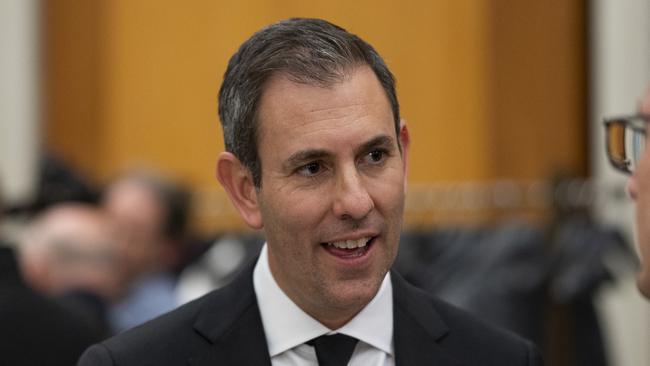
The June quarter national accounts show after-inflation household disposable income fell for the third straight quarter and economists expect the trend to continue over the rest of the year.
The gross domestic product deflator, a broad measure of price pressures across the economy, rose by 8.3 per cent over the year.
Families are dipping into savings to maintain their lifestyle and will have to keep doing so to meet rising mortgage and other costs following five straight hikes to the cash rate by the Reserve Bank.
Governments have done their bit, and then some, to ease the sting of a cumulative loss of $158bn in national output during the pandemic.
Analysis by the Australian Bureau of Statistics published on Wednesday shows the general government sector is now 15.6 per cent larger than it was before the Covid-19 upheaval.
The economy has grown by 5.5 per cent in that time, prompting CBA economist Gareth Aird to observe: “The upshot is government spending as a share of the economy has risen significantly.”
Anthony Albanese and Jim Chalmers are softening up voters for a budget that won’t be providing much in the way of cost-of-living relief.
The Treasurer has foreshadowed what he described as a “workmanlike” budget on October 25: honouring election promises, trying to fund a few surprises bequeathed by the previous tenants in Canberra, and taking a bit of their fiscal junk to the tip.
The national accounts are comprehensive but are a couple of months old. Since June, some of the gas has come out of consumer spending, home prices are descending from peaks, and interest rate-sensitive industries are in peril. In three weeks, the fuel-excise discount will end.
The clamour for relief from households will rock the new government, especially as it promised to ease the cost squeeze on them and get wages moving.
Yet Labor can’t mimic the desperation of the Coalition’s dying days, its tenure matching the “temporary” and “targeted” marketing of pre-election handouts.
A gifted and robust communicator, Chalmers will have to tough it out in his first fiscal showcase, and beyond. But in May, he can show his mettle by beginning the process of budget repair, boldly closing the structural chasm between spending and taxing this decade – and not by the lazy way of stiffing wage and salary earners through bracket creep.
If the economy is in a funk in May because the RBA botches the landing, fiscal consolidation will get pushed closer to the next election or the Never Never.
Chalmers has said the budget is “dire”. The latest accounts reveal the world has given Australia a stunning pay rise via the boomlet in commodity prices, which will help the budget.
On Wednesday, Chalmers said there would be “responsible cost-of-living support” in October, and not “counter-productive” by putting pressure on inflation, forcing the RBA to go higher on rates.
Naturally, Labor will be seeking to have it both ways in its first budget: claiming its spending on childcare, medicine, TAFE fees and electric vehicles help with living costs and also add to the nation’s capacity to generate growth and higher wages.
The Prime Minister and Treasurer have been steadfast, and a little testy, in their refusals to ditch the stage-three tax cuts, which take effect in 2024 and are worth $243bn over nine years.
Will Labor resist that buoyant and ready fiscal life raft if there’s another crisis or its latent big-government tendencies can no longer be repressed?







Buckle up Australia for the pain of diminishing purchasing power and a new government with limited capacity to help.